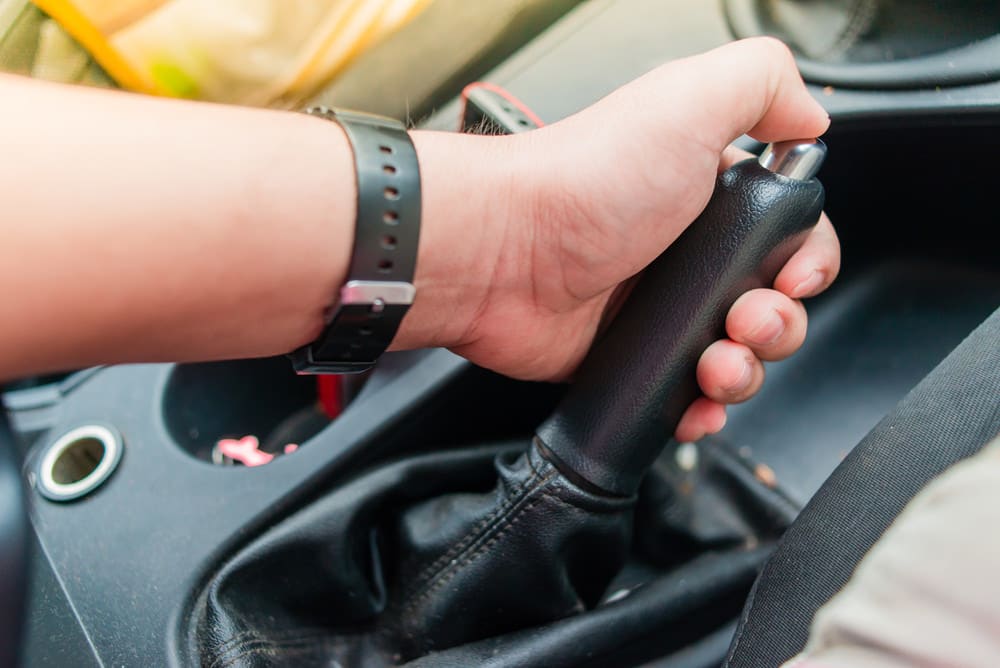

What is the Emergency or Parking Brake?
An auxiliary brake is a brake system that's separate from your regular foot-pedal brake system. Auxiliary brakes are more commonly called a parking brake, an emergency (E) brake, or a handbrake, and are connected to calipers that grip onto the rear wheel rotors, and serve as a critical component in ensuring the safety and stability of a vehicle. These are not the same calipers that the normal brakes use because the emergency brake system is separate from the main brakes in case of brake failure.
The key difference between auxiliary brakes is that one is called a “parking brake” while the other is called an “emergency brake” but in essence there is no difference. The term "handbrake" is most commonly used in reference to performance vehicles.
Unlike the primary braking system, which is responsible for slowing down or stopping the vehicle during normal driving conditions, the emergency or parking brake is specifically designed to prevent the vehicle from moving when parked.
Beyond its parking function, the E brake also plays a crucial role in emergency situations, providing an additional means of stopping the vehicle should the primary braking system fail. Understanding the proper usage and significance of the emergency brake is essential for every driver, contributing to overall vehicle safety and control.
Where is the Parking Brake Located?
The location of the parking brake varies among different vehicles, but it is generally found near the driver's seat within the interior of the car. In most cars, you can locate the parking brake lever or pedal between the driver's seat and the center console. The lever often protrudes vertically and can be engaged by lifting or pulling it, while the pedal is typically located on the far left side near the driver's footwell. Some modern vehicles feature electronic parking brakes, which are often controlled by a button or switch on the center console.
It's crucial for drivers to familiarize themselves with the specific location and operation of the parking brake in their vehicles to ensure effective use in both parking and emergency situations. Be sure to reference the vehicle's owner's manual to find specific details about your car's make and model.
What is the Parking Brake Used For?
Parking on Hill
When parking on a hill, the parking brake becomes a critical component for vehicle safety. In these situations, relying solely on the transmission's park position is insufficient. The parking brake acts as an additional layer of security, preventing the vehicle from rolling away. This is particularly important in areas with steep hills or uneven terrain. Applying the parking brake before shifting the transmission to "Park" ensures that the weight of the vehicle is resting on the brake system, reducing stress on the transmission's park pawl and preventing potential damage.
Driving a Manual Transmission or Stick Shift
For drivers of manual transmission or stick shift vehicles, using the parking brake is essential. Parking brake use is recommended even when driving an automatic vehicle. When parked, especially on a slope, engaging the parking brake prevents the vehicle from rolling away. Unlike automatic transmissions, where the park position is engaged by the transmission itself, manual transmissions require the driver to actively engage the parking brake. This not only prevents the vehicle from moving but also protects the transmission from unnecessary strain, as the parking brake holds the vehicle securely.
Emergency Stops
Utilize the parking brake judiciously, reserving its use as a last resort. In most cases, engaging the parking brake while the wheels are spinning may prompt movement due to wheel manipulation. Reserve its application for emergency situations and only when the vehicle is positioned in a straight line to ensure optimal effectiveness and safety.
Parking Brake or Emergency Brake?
The name that a particular brake bears depends on the intended use of it by the manufacturer.
Here are a few reasons why the auxiliary brake might be called a parking, emergency, or handbrake:
When the car has a manual transmission or when the brake is controlled electronically (activated by a button rather than a lever), it's called a parking brake. As discussed before, this is because it's used for keeping a manual vehicle in place when it's parked on any surface. Manual vehicles are in neutral unless they are left in gear when parked, so the parking brake keeps them in place. Automatic cars benefit from the use of a parking brake, as it protects the parking pawl in the transmission that holds the car in place when the transmission is in Park.
The term "emergency brake" is sometimes a bit misleading. While the auxiliary brake may be used in an absolute emergency, it is still more useful in the practical sense to use it for parking. Since calling it a "parking brake" may seem confusing to customers who already put the car in park when they park it, it is called an "emergency brake" instead.
In a performance or race vehicle, this part is called a handbrake, primarily because this particular brake locks up the rear wheels, allowing drivers to slide their car around corners with relative precision. This is also not a very safe practice, and should never be attempted on public roads.
If you want to learn more about the parking brake, check out our guide on the essential things you need to know about your parking brake. If you’re having trouble with you parking brake, give us a call or book a mobile mechanic near you today.



